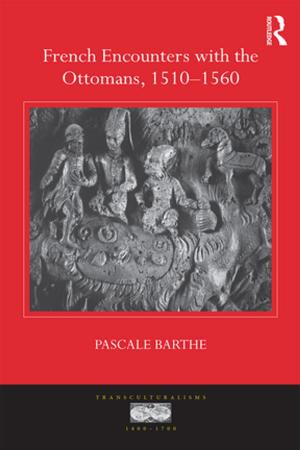Armenian Organization and Ideology Under Ottoman Rule
1908-1914
Nonfiction, Social & Cultural Studies, Social Science, History| Author: | Dikran Kaligian | ISBN: | 9781351531184 |
| Publisher: | Taylor and Francis | Publication: | September 8, 2017 |
| Imprint: | Routledge | Language: | English |
| Author: | Dikran Kaligian |
| ISBN: | 9781351531184 |
| Publisher: | Taylor and Francis |
| Publication: | September 8, 2017 |
| Imprint: | Routledge |
| Language: | English |
This book provides a comprehensive picture of Armeno-Turkish relations for the brief period of Ottoman Constitutional rule between 1908 and 1914. Kaligian integrates internal documents of the Armenian Revolutionary Federation, and existing research on the last years of the empire, as well as the archives of the British, American, and German diplomatic corps. By reducing the overemphasis on central government policies and by describing unofficial contacts, political relations, and provincial administration and conditions, Kaligian provides a unified account of this key period in Ottoman history. Kaligian sets out to resolve many of the conflicting conclusions in the current historiography-including the most central issue, the Armenian Revolutionary Federation relations with the Turkish Committee of Union and Progress. It is impossible to obtain a true picture of Armeno-Turkish relations without an accurate analysis of their two leading parties. This study finds that the ARF was torn between maintaining relations with a CUP that had failed to implement promised reforms and was doing little to prevent increasing attacks on the Armenian population, or break off relations thus ending any realistic chance for the constitutional system to succeed. The party continued to stake its reputation and resources on the success of constitutional government even after the trauma of the 1909 Adana massacres. The decisive issue was the failure of land reform. This book sets the record straight in terms of understanding Armeno-Turkish relations during this short but pivotal period. Kaligian's study, the first of its kind, shows that the party's internal deliberations support the conclusion that it did remain loyal and contradicts the view that the party's only aim was to incite a rebellion against Ottoman rule. The author has done an excellent job of leading the reader through this rich history, using primary source information to bridge the gaps from theory, to analysis, to evidence.
This book provides a comprehensive picture of Armeno-Turkish relations for the brief period of Ottoman Constitutional rule between 1908 and 1914. Kaligian integrates internal documents of the Armenian Revolutionary Federation, and existing research on the last years of the empire, as well as the archives of the British, American, and German diplomatic corps. By reducing the overemphasis on central government policies and by describing unofficial contacts, political relations, and provincial administration and conditions, Kaligian provides a unified account of this key period in Ottoman history. Kaligian sets out to resolve many of the conflicting conclusions in the current historiography-including the most central issue, the Armenian Revolutionary Federation relations with the Turkish Committee of Union and Progress. It is impossible to obtain a true picture of Armeno-Turkish relations without an accurate analysis of their two leading parties. This study finds that the ARF was torn between maintaining relations with a CUP that had failed to implement promised reforms and was doing little to prevent increasing attacks on the Armenian population, or break off relations thus ending any realistic chance for the constitutional system to succeed. The party continued to stake its reputation and resources on the success of constitutional government even after the trauma of the 1909 Adana massacres. The decisive issue was the failure of land reform. This book sets the record straight in terms of understanding Armeno-Turkish relations during this short but pivotal period. Kaligian's study, the first of its kind, shows that the party's internal deliberations support the conclusion that it did remain loyal and contradicts the view that the party's only aim was to incite a rebellion against Ottoman rule. The author has done an excellent job of leading the reader through this rich history, using primary source information to bridge the gaps from theory, to analysis, to evidence.















